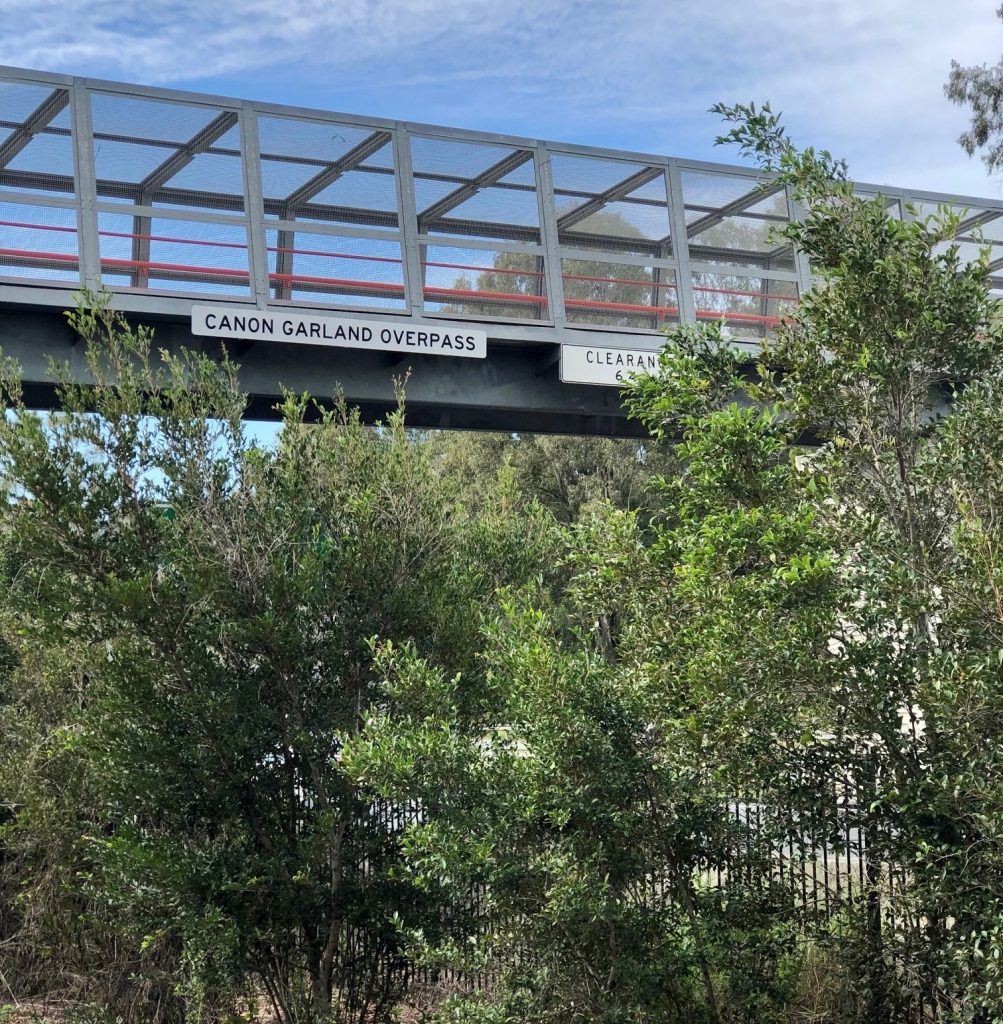Chair, I rise to acknowledge a recognition in my Ward last Friday, honouring a man whose vision and dedication ensures that we commemorate Anzac Day – that most sacred of days in Australian history – in an appropriate and respectful manner.
Motorists travelling into the city from the western suburbs via the Western Freeway will have noticed a new addition on the cycle and pedestrian overpass near the Mount Coot-tha exit.
That “addition” is a sign announcing Canon Garland Overpass, which appropriately was installed during the time of the Royal celebrations.
To those wondering who Canon Garland was and why the overpass has been named in his honour, I hope over the next couple of minutes to outline the appropriateness of this recognition.
Canon Garland was born in Ireland but came to Australia, aged 22, initially to work in law. But he soon found his real calling, serving the then Church of England in a number of capacities both in Queensland and Western Australia.
At the outbreak of World War 1, Canon Garland was in Brisbane and served as chaplain to soldiers in training camps as they prepared for active service overseas.
He also organised the provision of Bibles and prayer books to Queensland soldiers at the front. As a Senior Army Chaplain, Garland worked tirelessly in the training camps in and around Brisbane and further afield.
In 1915 he founded the Soldiers Help Society. He also travelled Queensland as honorary organising secretary of the Queensland Recruiting Committee, preaching to encourage greater enlistment.
But it was after the war that Canon Garland is best remembered.
History rightly acknowledges him as the “Architect of Anzac Day”.
Canon Garland served on the first Anzac Day Committee, appropriately in Queensland from 1916 until his death 1939.
He basically oversaw the introduction of the core aspects of Anzac Day. Without his energy, there would have been no national public holiday to commemorate this day, no closing of pubs and shops until mid-day, no minutes silence, no universal scrip of service, and no New Zealand involvement.
I thank the many people who supported the online petition to honour Canon Garland and the Department of Transport and Main Roads, which has ownership of the overpass, for consenting to the request.
Chair, as I’ve outlined to this Chamber before, Mount Coot-tha plays a key role in how the city of Brisbane remembers those who have served in the defence of our country over many campaigns.
It is home to the National Australia Remembers Freedom Wall which last year received a fresh coat of paint and loop road signage completed.
It’s also a nice touch that the overpass can been seen clearly from the location of the National Australia Remembers Freedom Wall, and one has to wonder if visionary Brisbane architect, the late Robin Gibson and former Veterans Affairs Minister, the late Con Sciacca had a sixth sense back in 1995 as to how this would pan out 27 years later.
The Canon Garland Overpass not only celebrates the achievements of the architect of Anzac Day, but creates an impressive marker of national significance at the entrance to the Brisbane Botanical Gardens.
Chair, this is all part of the master plan for the Botanic Gardens which is being progressively rolled out ahead of it being on show to the world in 2032.
The first major step in the master plan will be the re-opening of Bonsai House soon which will see the largest collection of bonsai in Australia reclaimed by Brisbane.
I look forward to updating the Chamber on progress as the new look Gardens takes place.
Thank you.

